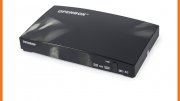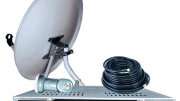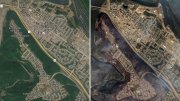This year, a variety of festivities are planned in celebration of Arecibo Observatory’s 50th anniversary. Located in Puerto Rico, the William E. Gordon telescope at the site is the world’s largest, most sensitive single-dish radio telescope. Over the years, findings from Arecibo have contributed to better understanding of the earth’s atmosphere, the moon, asteroids, other planets, exotic stars, our galaxy, and the large-scale galactic structure of the universe.
A Future Just As Vibrant As Its Storied Past
Since October 2011, Arecibo Observatory has been managed, operated, and maintained for the National Science Foundation by SRI International, in cooperation with the Universities Space Research Association (USRA), and the Universidad Metropolitana (UMET) in San Juan, Puerto Rico. Researchers from SRI’s Center for Geospace Studies and USRA conduct research in atmospheric science and astronomy, while UMET oversees the Observatory’s educational component.
Arecibo’s prominent legacy includes the first radar-ranging of an earth orbit crossing asteroid, early maps of several solar system objects, a Nobel Prize for confirming Einstein’s general theory of relativity through the timing of binary pulsar orbital decay, and the first detection of planets orbiting another star—among dozens of other breathtaking discoveries and findings.
Figure 1 (above) A combined optical and X-ray image of the Crab Nebula (left) and a schematic of a pulsar (center), which is a rotating neutron star radiating radio pulses of energy as it rotates. In 1968, scientists at the Arecibo Observatory showed that pulses from this nebula are caused by a 33 ms pulsar at its center. In 1974, Joseph Taylor and Russell Hulse discovered a binary pulsar system at Arecibo, and showed that the orbital decay of that system confirmed Einstein’s theory of general relativity (right). This work was recognized with a Nobel Prize in1993.
Discoveries on the Cutting Edge of Science
Here are some other great moments in Arecibo’s recent history:
- In 2011, the NASA Messenger spacecraft confirmed the presence of water ice on the planet Mercury. The intuitively unlikely presence of water on the planet closest to the sun was first suggested by radar images of craters at Mercury’s pole from Arecibo, in 1991.
- In June, 2012, observations with the S-band planetary radar at Arecibo showed that near-Earth asteroid 2005 YU55 is actually 2 times larger (with 8 times the volume) than previously thought. This result underscores the unprecedented capability of the telescope to determine the orbits of potentially hazardous asteroids, and to image surface detail that can be useful for future landing missions.

Figure 2 (right) This raw image of asteroid 2005 YU55 from Arecibo has 7.5 m resolution, and shows a bright reflection from what may be a large boulder on the surface, just to the left of center.
Source: www.sri.com
|
LE POPOL-VUH: Histoire extraordinaire de la Création par des « dieux ingénieurs » (Mystères inexpliqués - Objets insolites t. 2) (French Edition) eBooks (CIRAC) |
Related posts:






















